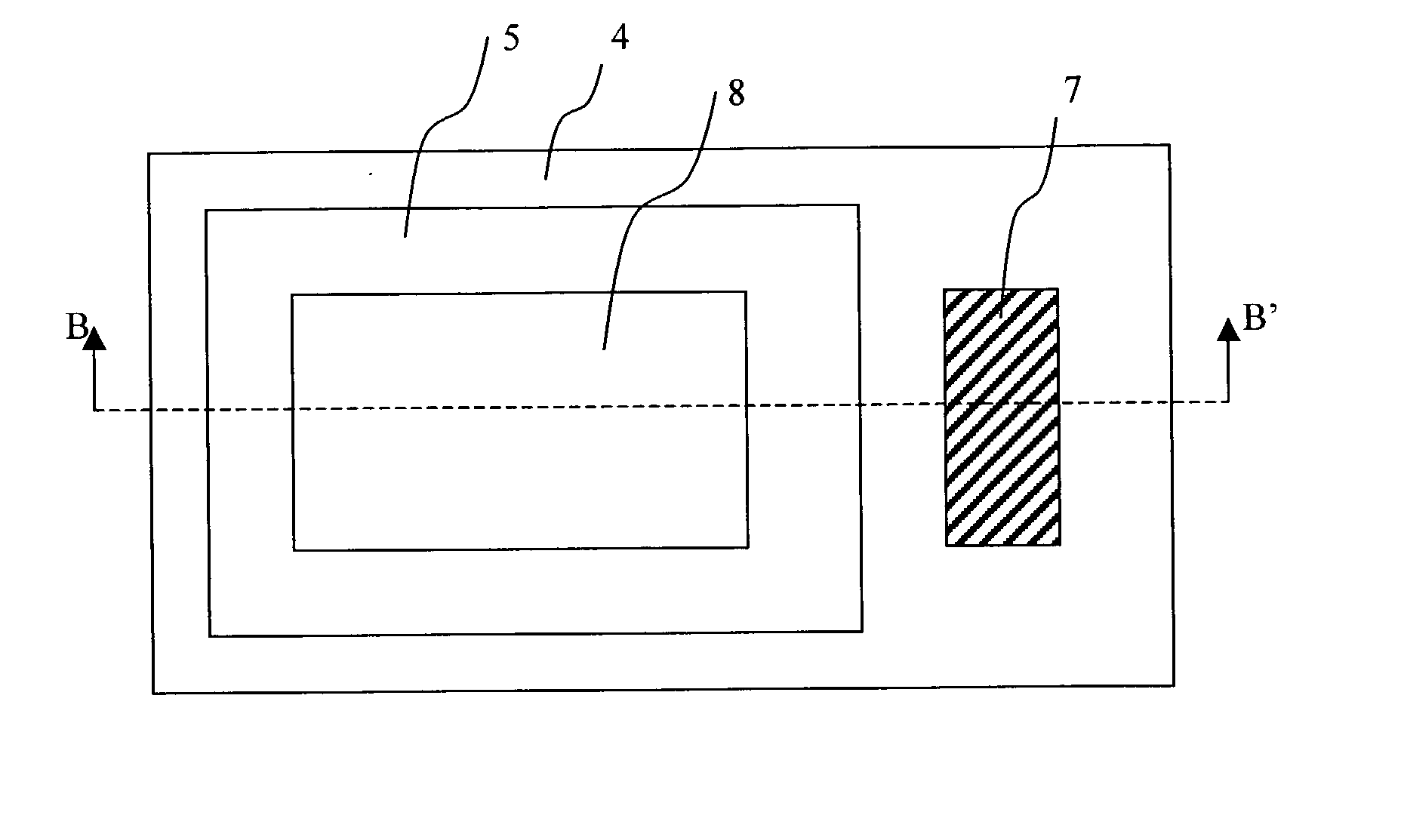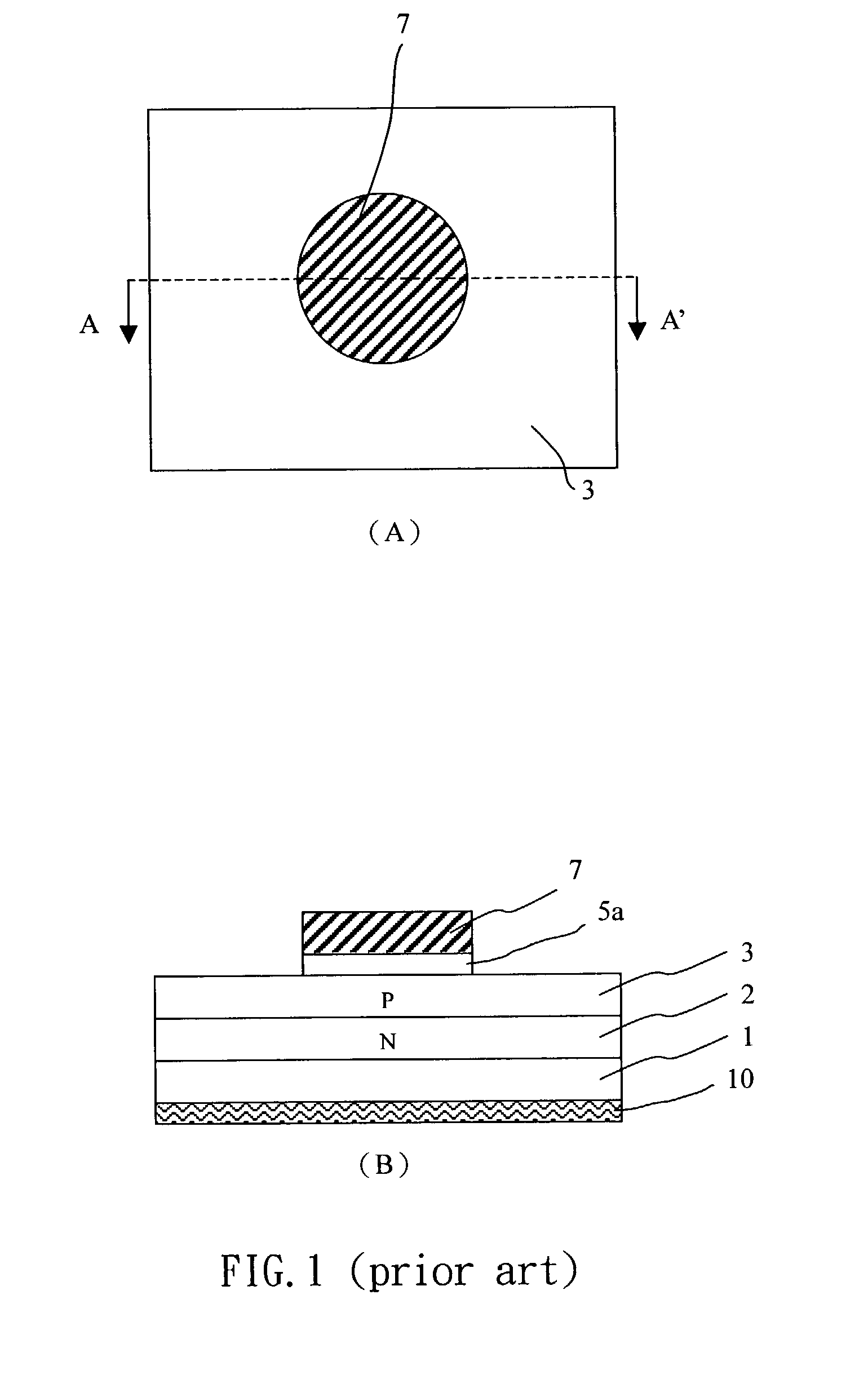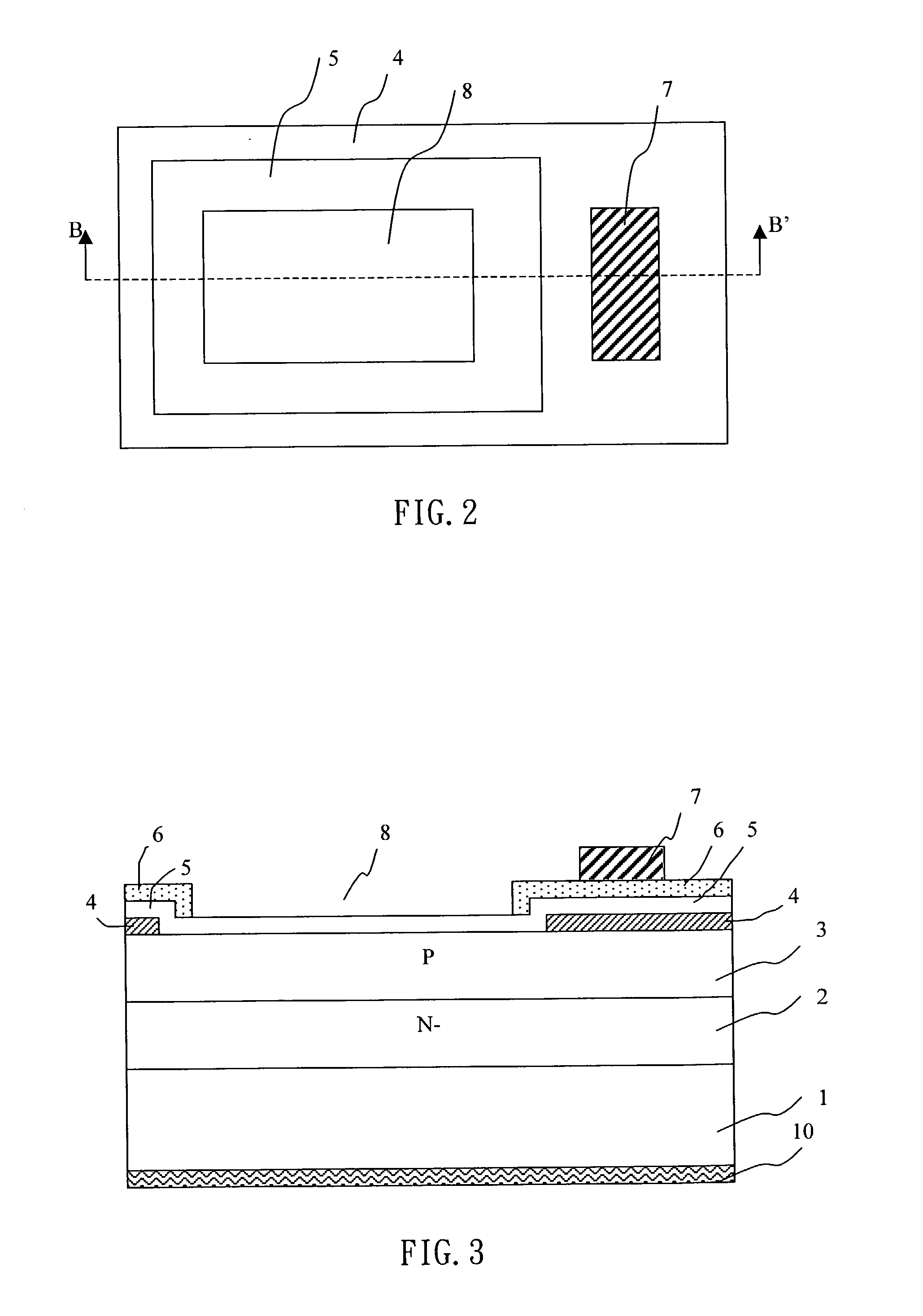Electrode structure of LED and manufacturing of the same
a technology of light emitted diodes and electrodes, which is applied in the direction of basic electric elements, electrical equipment, semiconductor devices, etc., can solve the problems of short life time of leds, lattice defects, and junction damage, and achieve the effect of improving light emitted efficiency
- Summary
- Abstract
- Description
- Claims
- Application Information
AI Technical Summary
Benefits of technology
Problems solved by technology
Method used
Image
Examples
first embodiment
[0024] FIG. 2 shows the electrode structure of a bottom layer LED for overlap cascaded packaging of the present invention. FIG. 3 is the cross section along BB' of FIG. 2. Substrate 1 is always a non transparent .quadrature.-.quadrature.group or .quadrature.-.quadrature. group compound semiconductor such as GaAs,GaP or GaN. A layer of n-type semiconductor 2 is formed by epitaxy technology on the substrate 1(see the cross sectional view of FIG. 3). Then a p-type semiconductor 3 is expitaxied to form a pn- junction as the light emitted diode. The pn- junction may be double hetero structure or quantum well structure. An electrode structure of the present invention is formed on the p-type semiconductor: First, a silicon dioxide layer 4 of 1000 .ANG. to 10000 .ANG. is deposited on the p-type semiconductor. By using a first mask in lithography and etching process to etch away the silicon dioxide to form an open window and keep the silicon dioxide around the chip and under the bonding pad ...
second embodiment
[0029] FIG. 8A, 8b, 8C and 8D are the manufacturing steps of the electrodes of a LED according to the present invention. As shown in FIG. 8A, n-type semiconductor 2 and p-type semiconductor 3 are epitaxied on a sapphire substrate 1, then etch away a strip of p-type semiconductor by lithography and etching to form a step 14 with width of 100-200 .mu.m, the n-type semiconductor 2 under the step 14 is then exposed. As in FIG. 8B, a silicon dioxide of thickness 1000 .ANG. to 1000 .ANG. is deposited, a first mask is used to pattern the silicon dioxide, remove the oxide on the contact area and keep the oxide 4 around the periphery of the chip and under the positive bonding pad 7. The width of the oxide 4 is 5-20 .mu.m except that under the positive bonding pad. Under the positive bonding pad 7 the oxide 4 is wider than the positive bonding pad 7 for absorbing the stress of wire bonding. Under the negative bonding pad, the oxide 4 is removed except around the periphery of the chip and arou...
PUM
 Login to View More
Login to View More Abstract
Description
Claims
Application Information
 Login to View More
Login to View More - R&D
- Intellectual Property
- Life Sciences
- Materials
- Tech Scout
- Unparalleled Data Quality
- Higher Quality Content
- 60% Fewer Hallucinations
Browse by: Latest US Patents, China's latest patents, Technical Efficacy Thesaurus, Application Domain, Technology Topic, Popular Technical Reports.
© 2025 PatSnap. All rights reserved.Legal|Privacy policy|Modern Slavery Act Transparency Statement|Sitemap|About US| Contact US: help@patsnap.com



